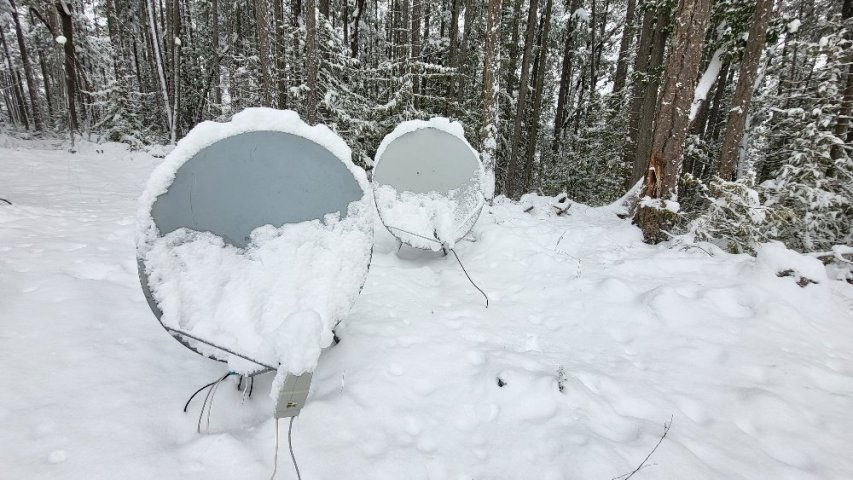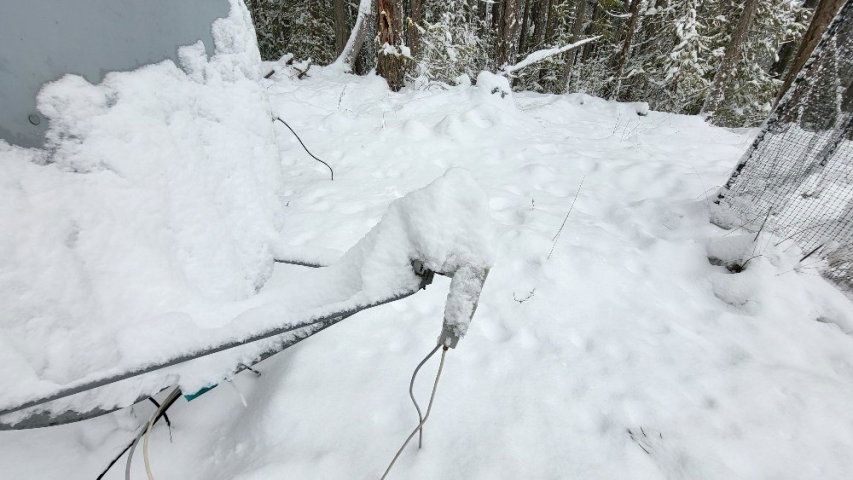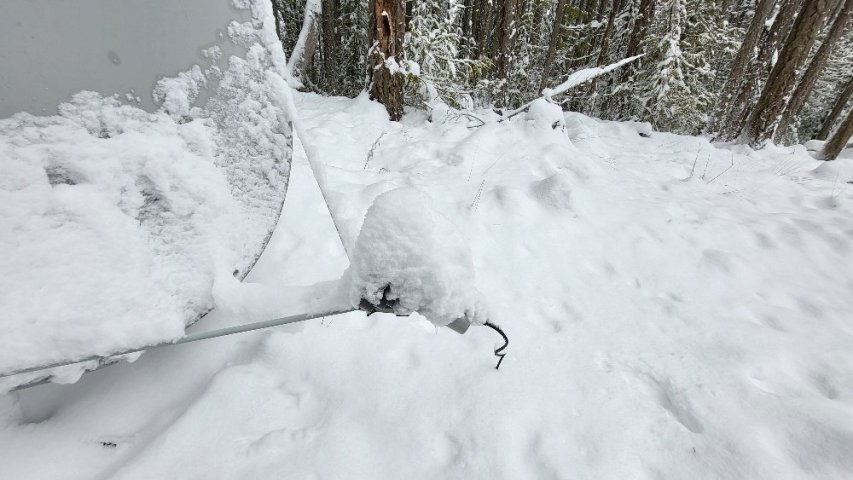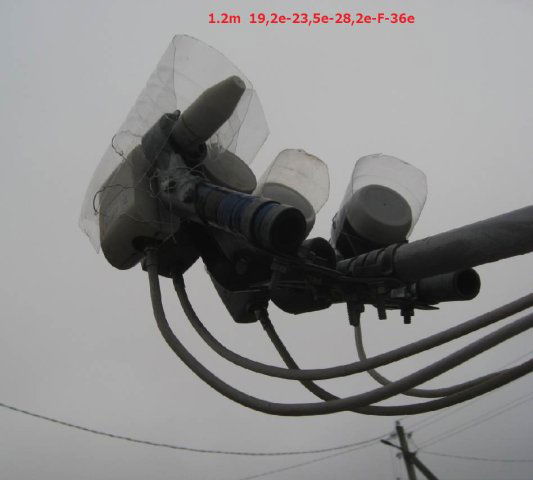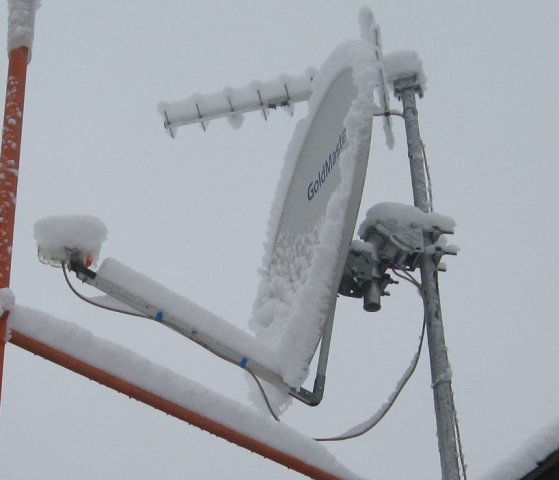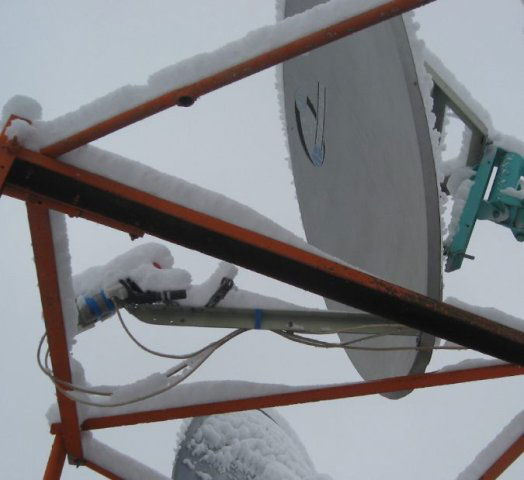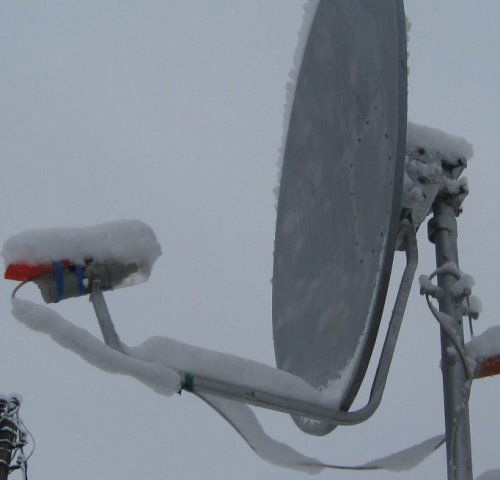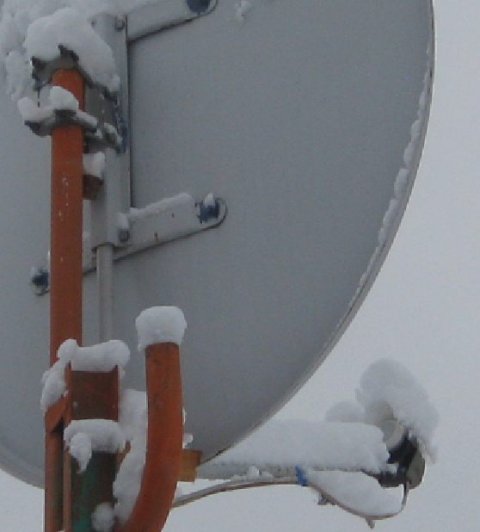What Snow?
- Thread starter cyberham
- Start date
- Latest activity Latest activity:
- Replies 3
- Views 276
C-band is much less susceptible to precipitative attenuation than is Ku. It was originally chosen for sat and terrestrial links because of its rain stability. Thus a better ability to get past snow buildup doesn't surprise me.
And to have a good signal in Ku, put a plastic visor on the antenna. It has been tested, in snow and rain the signal is not 100 percent, but you can watch. If the antenna was higher from the ground, there would be less snow.The Ku dish stopped receiving.
Attachments
Good to know. This snowfall was quite unusual here. Snow is not normally an issue at my location so it's a novelty. Brushing the snow off immediately restored good operation of the Ku dish. I like the dish very close to ground so I can sit on a chair while tweaking the LNB, especially on C-band.And to have a good signal in Ku, put a plastic visor on the antenna. It has been tested, in snow and rain the signal is not 100 percent, but you can watch. If the antenna was higher from the ground, there would be less snow.
Similar threads
- Replies
- 13
- Views
- 369
- Replies
- 0
- Views
- 296
- Replies
- 12
- Views
- 1K
- Replies
- 17
- Views
- 2K
Users Who Are Viewing This Thread (Total: 0, Members: 0, Guests: 0)
Who Read This Thread (Total Members: 55)
- cyberham
- Ken19
- Santa Clause
- Panavision
- soundman65
- Alexrules11
- sgs
- Titanium
- catamount
- Brct203
- NYDutch
- Borisov-54
- k4otl
- Elsguy
- toucan-man
- pamajestic
- K3dmurphy
- waylew
- clucas
- Comptech
- juventusbrown
- mikekohl
- mr_rye89
- harshness
- mc6809e
- bcwmachine
- one_db_compression
- a33
- 1oldman123
- freddylq
- gms49ers
- norman881
- primestar31
- Jimbo
- ZetaMale
- Mr Tony
- TRG
- phlatwound
- Keith Brannen
- AZ.
- voomvoom
- FTA4PA
- oldsmobile
- lost_mesa
- Cobra
- N5XZS
- Jim S.
- MrMars
- VictoriaFTA
- comfortably_numb
- stecle
- telstar_1
- Bruce
- b4pjoe
- lordodogg


